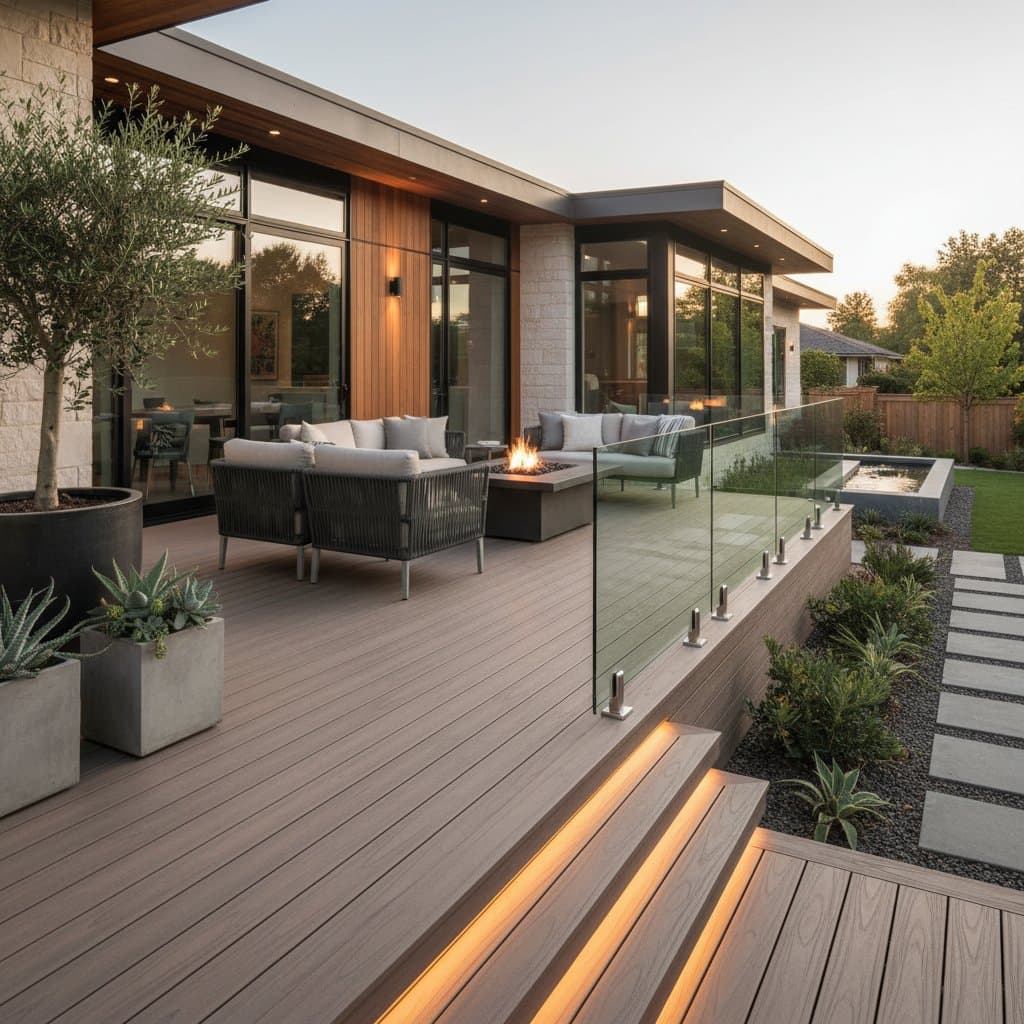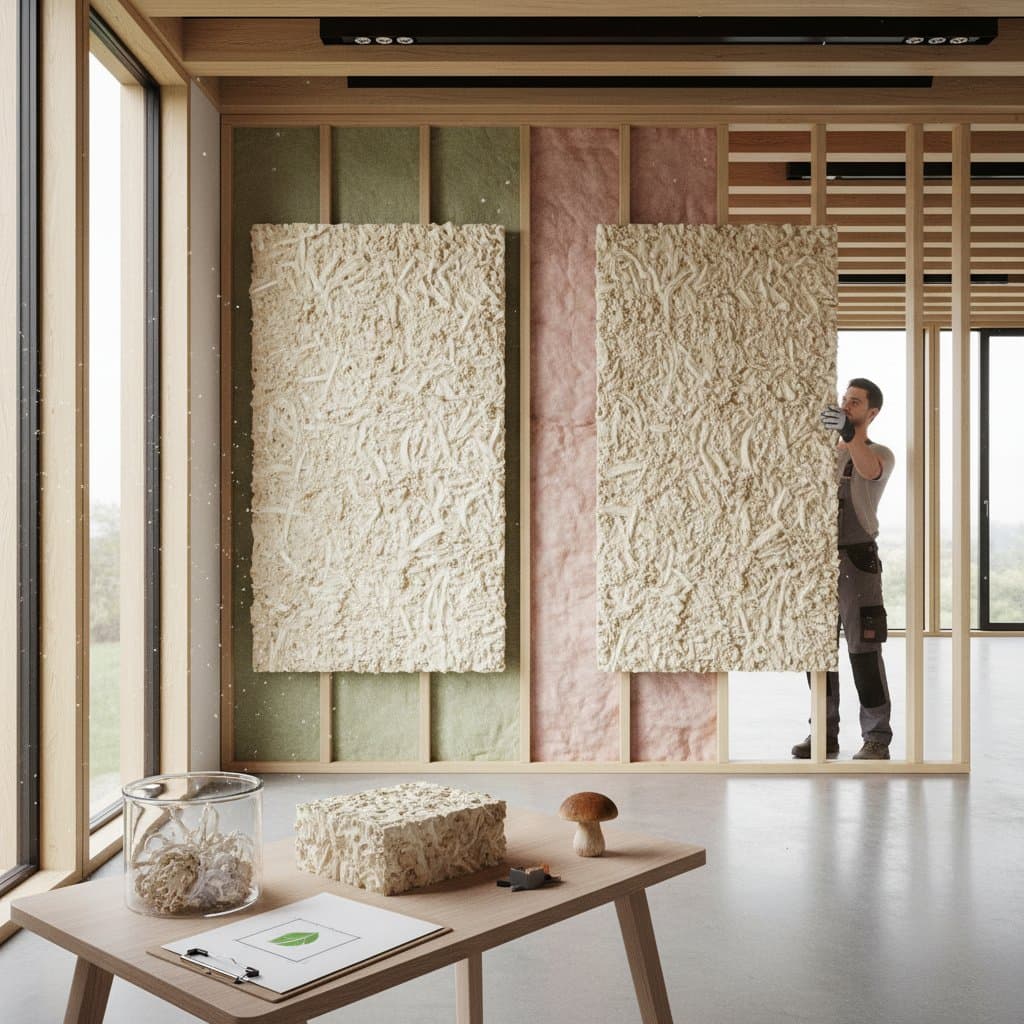The Fungal Innovation Reducing 2025 Energy Costs
Mushrooms typically evoke images of culinary dishes or woodland growth, not structural components in homes. However, advancements in building science position mycelium insulation, derived from fungal root networks, as a leading energy-efficient material. This sustainable solution lowers energy expenses and minimizes environmental harm.
Essential Benefits
- Mycelium insulation reduces heating and cooling expenses by up to 30 percent relative to standard options.
- The material proves fully biodegradable and demands far less energy for production than synthetic counterparts.
- It resists fire naturally, repels mold, and absorbs sound effectively, delivering superior functionality.
- Initial users note enhanced indoor air quality and diminished carbon emissions.
- Experts anticipate widespread application in commercial and residential projects during the upcoming construction phase.
Understanding Mycelium Mechanics
Mycelium forms the foundational network for mushroom development. This structure acts as a natural binder, combining agricultural residues like hemp hurds, wood shavings, or cereal straw into a compact, foam-resembling substance. Cultivated within molds under regulated environments, it yields lightweight panels or blocks that replicate conventional insulation efficacy without petroleum reliance.
The self-shaping property of mycelium stands out. It conforms to designated forms, allowing production of wall sections, overhead panels, or bespoke insulating boards with limited additional handling. Heat processing stops growth, rendering the product stable, robust, and suitable for construction.
Building science experts report thermal conductivity rates for mycelium composites ranging from 0.03 to 0.05 watts per meter-kelvin. These figures align with expanded polystyrene and polyurethane foams. Homeowners thus secure equivalent thermal protection from a wholly organic, decomposable resource.
Energy Efficiency Advantages of Mycelium
Standard insulators such as fiberglass and foam boards function adequately yet impose ecological burdens. These products depend on fossil-based inputs, contribute to microplastic waste, and resist recycling. Mycelium alters this dynamic by utilizing farm byproducts, redirecting refuse from disposal sites, and employing low-energy methods.
Research from a European sustainability organization indicates that mycelium insulation lowers embedded carbon outputs by as much as 80 percent versus typical foams. Such decreases prove vital as the building industry addresses stricter environmental standards.
Homeowners experience tangible gains through reduced utility payments. The inherent density of mycelium impedes heat movement, maintaining cooler summers and warmer winters indoors. Paired with sealed building envelopes, it cuts overall heating and cooling demands by 20 to 30 percent, according to residential trials.
Performance Comparison with Standard Materials
A direct evaluation of key attributes clarifies mycelium's position.
| Material Type | Thermal Conductivity (W/m·K) | Fire Resistance | Biodegradability | Estimated Cost per Square Foot |
|---|---|---|---|---|
| Fiberglass | 0.04 | Moderate | No | Low |
| Polyurethane Foam | 0.03 | Low | No | Medium |
| Mineral Wool | 0.04 | High | No | Medium |
| Mycelium | 0.04 | High | Yes | Medium |
Mycelium's initial expense mirrors mineral wool, but its ecological merits and prospects for regional manufacturing enhance competitiveness. With expanded production, specialists forecast price reductions of 15 to 25 percent, establishing it as a viable bio-option.
Insights from Industry Professionals
Professionals in architecture, construction, and sustainability actively test this bio-material.
"Clients demand high-performance options produced responsibly," states Clara Nguyen, an eco-design architect involved in a recent office upgrade with mycelium panels. "Thermal results met projections, yet the sound dampening exceeded expectations, creating a noticeably quieter environment."
Building scientist Daniel Ortiz observes, "Lifecycle gains represent the core strength. Energy savings occur not only in daily use but also in manufacturing and end-of-life phases. Such comprehensive advantages remain uncommon in construction."
Implementation Guidance for Homeowners and Contractors
Commercial mycelium products enter the market in preliminary forms. Bio-material firms supply ready-to-install panels akin to rigid foam or fiberboards.
Consider these factors prior to adoption:
- Assess your regional climate. Mycelium excels in moderate and arid conditions. High-moisture zones require vapor barriers to preserve efficacy.
- Verify R-value standards. Codes mandate specific insulation thresholds. Mycelium boards typically offer R-values of 3 to 3.5 per inch, fitting walls and attics in varied climates.
- Account for setup practicalities. Lightweight panels cut readily with common tools, suiting self-directed upgrades or modest endeavors.
- Explore combined approaches. Pairing mycelium with cellulose or reclaimed fabric insulators optimizes humidity control and noise reduction.
- Select accredited providers. As the sector matures, verified data from suppliers guarantees dependability.
Broader Environmental Impacts
Mycelium extends benefits beyond individual residences. Each square meter sequesters approximately 0.25 kilograms of carbon dioxide during cultivation. In a standard home, this translates to hundreds of kilograms stored structurally rather than atmospheric release.
Community initiatives respond positively. Trial developments document declines in energy operations and material carbon after mycelium integration. For areas targeting efficiency, this provides a concrete route to zero-emission dwellings.
The link to agriculture fosters regional economies. Mycelium thrives on local discards like maize residues, paddy shells, or timber scraps, bolstering sustainable cycles for growers and constructors alike.
Addressing Common Concerns
Emerging technologies like mycelium encounter doubts regarding longevity and availability. Skeptics question if organic composites endure as long as petroleum foams. Testing reveals strong durability; sealed samples retain form and insulation over prolonged exposure.
Production timelines pose another issue, with batches requiring days to mature. Firms counter this through scalable growth chambers that boost volume without added power use. Natural processes dominate, sustaining affordability amid growth.
Standardization efforts advance, including uniform evaluations and approvals. Consistent metrics will facilitate code integration, accelerating acceptance.
Steps to Integrate Mycelium
For renovations or constructions, incorporating mycelium secures enduring financial and ecological returns. Identify nearby suppliers of tested bio-panels. Obtain samples to evaluate compatibility and aesthetics prior to commitment. Discuss assembly integration with builders to align with regional regulations.
Existing structures suit incremental additions. Target attics, basement overheads, and garage partitions for insulation enhancements.
Bio-materials represent more than a passing phase. They address escalating utilities and construction's ecological toll directly. As awareness grows among stakeholders, mycelium transitions from specialty to standard, cultivating sustainable habitats panel by panel.








